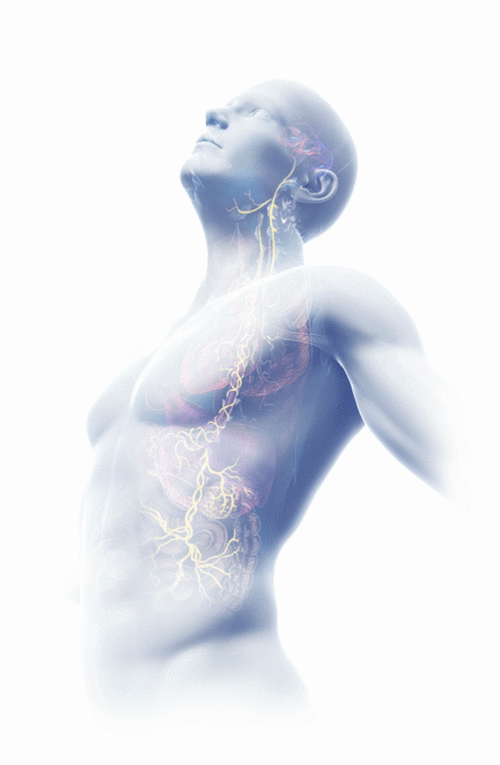
.jpeg)
.jpeg)

Global/China/Japan/Uk/Us
HOCIT GROUP
Eye-catching AI company・AI venture IT master HOCIT GROUP
Message from industry leader
Global/China/Japan/Uk/Us
HOCIT GROUP
Eye-catching AI company・AI venture IT master HOCIT GROUP
Message from industry leader
Global/China/Japan/Uk/Us
HOCIT GROUP
Eye-catching AI company・AI venture IT master HOCIT GROUP
Message from industry leader

Global/China/Japan/Uk/Us/Canada
HOCIT GROUP
HOCIntelligentTechnology
哈牛桥智能科技集团
HOCインテリジェントテクノロジー(株)
Japan-China Trade & Promotion Artificial Intelligence Deep Learning Association
Eye-catching AI company・AI venture IT master HOCIT GROUP
Message from industry leader.High-tech enterprise




.jpeg)




DX:Digital Transformation
AI IOT 5G Cloud
.jpeg)




Harvard University, Oxford University
Cambridge University
, MIT University




















HOCIntelligentTechnology
哈牛桥智能科技集团
HOCインテリジェントテクノロジー(株)
普通法人协会日中贸易促进人工智能深度学习协会
一般社団法人日中貿易振興人工知能ディープラーニング協会
Japan-China Trade & Promotion Artificial Intelligence Deep Learning Association
Eye-catching AI company・AI venture IT master HOCIT GROUP
Message from industry leader .High-tech enterprise
STOP COVID-19 × AI, IoT, Internet of Things, RPA, OCR-AI, ERP, cloud, bigdata, blockchain, ICT, 5G, 3D, AR, VR, iCLIP, core industrial software, smart chips, smart driving, core algorithms, neutrinos, quantum Top cutting-edge Technology Pioneering the future in an environment where the latest technologies and products are involvedEducation/Medical/Healthcare/Finance/Sports/Security/autonomous/Robot/IOT/ICT/Smart Manufacturing/Smart Transportation/Smart City/Smart Home/Smart Logistics/AI Real Estate/AI Marketing/AI Advertising/AI Agriculture and other fields





Top 10 scientists worldwide in ours Team
Among them, the familiar statistical machine learning man Michael I. Jordan ranked 4th, and the deep learning gods and the 2018 Turing Award winners Geoffrey Hinton and Yoshua Bengio ranked 9th and 10th respectively.
In addition, there are two Chinese scholars among the top 10 computer scientists, namely Jiawei Han, professor of computer science at the University of Illinois at Urbana-Champaign, and Philip S. Yu, professor of information technology at the University of Illinois at Chicago.

.jpeg)





.jpeg)







.jpeg)



























.jpg)
.jpg)

.jpg)









































.jpeg)



.jpeg)



The new coronavirus infectious disease "COVID-19" that is raging all over the world. Not only is it a health hazard to humans, but it is also seriously damaging society and the economy as a whole. What should the world economy aim to revive from here?
In this special issue, we interviewed leading industry representatives in each industry and explored the impact of the coronavirus on the industry, structural reforms to be made, and the path to hope ahead of corona. ..




.jpeg)






.jpg)












.jpg)







.jpeg)









Leading company's digital transformation 【DX Business Consultant Service Consultant Industry Leader
[IT engineer] Inexperienced OK! There is customer resident, system development for contract projects 100%, in-house development
In-house product development industry leader
.jpeg)






_%E3%83%9A%E3%83%BC%E3%82%B8_1.jpg)













.jpeg)










HOCIT GROUP
HOCIntelligentTechnology
哈牛桥智能科技集团
HOCインテリジェントテクノロジー(株)
普通法人协会日中贸易促进人工智能深度学习协会
一般社団法人日中貿易振興人工知能ディープラーニング協会
Japan-China Trade & Promotion Artificial Intelligence Deep Learning Association
Eye-catching AI company・AI venture IT master HOCIT GROUP
Message from industry leader
STOP COVID-19 × AI, IoT, Internet of Things, RPA, OCR-AI, ERP, cloud, bigdata, blockchain, ICT, 5G, 3D, AR, VR, iCLIP, core industrial software, smart chips, smart driving, core algorithms, neutrinos, quantum Top cutting-edge Technology. Pioneering the future in an environment where the latest technologies and products are involvedEducation/Medical/Healthcare/Finance/Sports/Security/autonomous/Robot/IOT/ICT/Smart Manufacturing/Smart Transportation/Smart City/Smart Home/Smart Logistics/AI Real Estate/AI Marketing/AI Advertising/AI Agriculture and other fields



.jpeg)





















.jpg)










































.jpeg)





.jpeg)
The consciousness of Harvard University, Oxford University, Cambridge University is the leading research and academic field of Harvard University, Oxford University, Cambridge University. The research and development team has more than 380 people. ERP consulting, artificial intelligence computer vision, natural language processing technology, data mining advanced data analysis , Cross-media analysis and reasoning technology, intelligent adaptive learning technology, swarm intelligence technology, autonomous unmanned technology, smart chip technology, brain-computer interface technology and other high-tech cutting-edge technologies in security, finance, retail, transportation, education, medical care, manufacturing, health Leading technology

.jpg)









DX:Digital Transformation
AI IOT 5G Cloud









Our mission is to increase
the GDP of the internet
Stripe is a technology company that builds economic infrastructure for the internet. Businesses of every size—from new startups to public companies—use our software to accept payments and manage their businesses online.
Our mission is to increase
the GDP of the internet
Stripe is a technology company that builds economic infrastructure for the internet. Businesses of every size—from new startups to public companies—use our software to accept payments and manage their businesses online.
Stripe is a technology company that builds economic infrastructure for the internet. Businesses of every size—from new startups to public companies—use our software to accept payments and manage their businesses online.












.jpeg)

AI×healthy


Kiyooka University,
University of Tokyo






California Institute of Technology University
.jpeg)





Top 10 scientists worldwide in ours Team
Among them, the familiar statistical machine learning man Michael I. Jordan ranked 4th, and the deep learning gods and the 2018 Turing Award winners Geoffrey Hinton and Yoshua Bengio ranked 9th and 10th respectively.
In addition, there are two Chinese scholars among the top 10 computer scientists, namely Jiawei Han, professor of computer science at the University of Illinois at Urbana-Champaign, and Philip S. Yu, professor of information technology at the University of Illinois at Chicago.
With the world's leading AI, IoT, RPA, OCR-AI, ERP consulting, cloud, bigdata, blockchain, ICT, 5G, 3D, AR, VR, iCLIP, aviation design software, core industrial software, core algorithms, China Micro Top core technologies such as quantum computing, artificial intelligence, smart driving, smart chips, edge computing technology, robotics and automation systems, smart phones and cloud computing, smart cities, etc. These core technologies all come from independent research and development and have independent intellectual property rights. Actively advocate sunshine and health
The corporate values of the business philosophy, compliance with applicable laws and regulations, product technologies are widely used in smart chips, education, healthcare, finance, sports, security, new retail, unmanned driving, robots, IOT, ICT, smart manufacturing, smart transportation, smart cities , Smart home, smart management, RPA, smart factory, smart logistics, AI real estate, AI marketing, AI advertising, AI agriculture and other social inclusive fields
OUR TEAM
Harvard University, Oxford University Cambridge University, MIT University, California Institute of Technology University, Tsinghua University, Tokyo University, Kyoto University, Beijing University, Stanford University Zhejiang University, Tohoku University Hong Kong, Osaka University National University of Singapore, University of Science and Technology of China Seoul University PhD composition of Fudan University






_%E3%83%9A%E3%83%BC%E3%82%B8_2.jpg)
_%E3%83%9A%E3%83%BC%E3%82%B8_1.jpg)







.jpg)

















.jpg)


















.jpg)













Kyoto University,
Beijing University
Increased demand due to corona damage!
In system thinking
Create business,
A new service is born!















Stanford University






Zhejiang University,
Northeastern University





With a full remote team Prove the power of design,STOP COVID-19 × AI, IoT, Internet of Things, RPA, OCR-AI, ERP, cloud, bigdata, blockchain, ICT, 5G, 3D, AR, VR, iCLIP, core industrial software, smart chips, smart driving, core algorithms, neutrinos, quantum Top cutting-edge Technology
Bring the power of technology-driven design,AI, IoT。。。Top cutting-edge Technology
teams to your projects













STOP COVID-19 × AI, IoT, Internet of Things, RPA, OCR-AI, ERP, cloud, bigdata, blockchain, ICT, 5G, 3D, AR, VR, iCLIP, core industrial software, smart chips, smart driving, core algorithms, neutrinos, quantum Top cutting-edge Technology. Pioneering the future in an environment where the latest technologies and products are involvedEducation/Medical/Healthcare/Finance/Sports/Security/autonomous/Robot/IOT/ICT/Smart Manufacturing/Smart Transportation/Smart City/Smart Home/Smart Logistics/AI Real Estate/AI Marketing/AI Advertising/AI Agriculture and other fields








Hong KongUniversity, Osaka University
National University of Singapore,
University of Science and Technology of China
Seoul University Fudan University
Kyoto University,
Beijing University






.png)








.jpg)

.jpg)









.jpeg)



.jpg)

Media
https://www.jcdla.org
Smart City
Smart Transportation









.png)












.jpg)


































.jpg)

service
Contact Us
STOP COVID-19 × cutting-edge technologies Technology
.jpeg)

ビッグデータ・BI
Big data/BI
大数据/BI

AI(人工知能)人工智能

IoT





ロボティクス
Robotics
机器人

決済
settlement
清算

クラウドコンピューティング
Cloud computing
云计算
ビジネスアプリケーション
テクノロジー
ITインフラ・運用
Business application
CRM (customer management)
ERP (Integrated Business)/Business Management
Financial accounting/IFRS
Disaster prevention/crisis management
EDI
Document management
SCM (Supply Chain Management)
Electronic application
Workflow
Internal control
Environment/Energy
System infrastructure design
life science
technology
Block chain
Big data/BI
Cloud computing
settlement
Open source software
Security/Authentication
Web service
System infrastructure design
GIS/GPS
AI (artificial intelligence)
IoT
Robotics
IT infrastructure/operation
network
Data center
Security/Authentication
Cloud computing
outsourcing
settlement
业务应用
CRM(客户管理)
ERP(综合业务)/业务管理
财务会计/ IFRS
防灾/危机管理
电子数据交换
文件管理
SCM(供应链管理)
电子应用
工作流程
内部控制
环境/能源
系统基础架构设计
生命科学
技术
区块链
大数据/ BI
云计算
沉降
开源软件
安全/认证
网络服务
系统基础架构设计
地理信息系统/全球定位系统
AI(人工智能)
物联网
机器人技术
IT基础架构/运营
网络
数据中心
安全/认证
云计算
外包
清算











Getting to the root of cognitive impairment
We’re creating personalized digital therapeutics engineered to directly improve cognitive impairments. Our medicines look and feel like high-end interactive action video games but, unlike typical video games, they are informed by decades of neuroscience and built with proprietary technology developed to target and treat cognitive impairments at their specific sources in the brain.
Not only is our medicine designed to target the areas of your brain that need it most, it’s designed specifically for you, adapting based on your individual needs.
Explore the science and technology behind our digital treatments
Developed through the collaboration of world-renowned cognitive neuroscientists and acclaimed entertainment and technology designers, Akili has created a proprietary technology platform that represents an entirely new category of medicine.
Built on extensive peer-reviewed research, Akili’s products are designed to deliver sensory and motor stimuli to selectively target and activate specific cognitive neural systems in the brain. The proprietary technology is engineered to directly generate physiological changes in the brain to improve cognitive function.
A pioneering approach
We strive to make treatments that are not just engaging, but captivating to the point that, in the moment, patients forget they are taking medicine.
Our digital medicine is delivered through creative and immersive action video game experiences to keep patients engaged and immersed in the treatment. Our products leverage the fun, deep engagement, and rewards that make games incredibly compelling but, unlike typical video games, this personalized gameplay experience is engineered with adaptive algorithms designed to improve cognitive function.




Our first program is Sleepio, a digital sleep improvement program




COVID-19に対して高リスクとなりうる基礎疾患を持つ患者をAIで抽出する試みが、インドのムンバイで展開されている。同国のスタートアップ Radical Health-tech Private Limitedは、網膜画像の微細な変化からAIによって「非眼科疾患を含む併存疾患の有無」を検出するスクリーニング技術を有する。
インドの英字日刊紙 Hindustan Timesが26日に報じたところによると、Radical Health-techは6月から7月にかけてムンバイ市内15ヶ所で3,167人の網膜画像から基礎疾患スクリーニングを行った。1,255人に併存疾患が指摘され、その65%は自身の基礎疾患に気付いていなかった。緑内障と加齢黄斑変性が259人、糖尿病が188人、高血圧が376人、その他5人(喘息・黄疸・結核・尿路結石など)の疾患が発見された。3,167名はCOVID-19の重症化リスクとして、高リスク88名(2.78%)・中等度リスク713名(22.51%)・低リスク2,366名(74.71%)に分類された。
Radical Health-techの共同創設者 Rito Maitra氏によると、インドでは年に一度の健康診断を行わない人が多く、特に低所得者層を中心に自身の基礎疾患に気付いていない例が多数あるという。そのような患者らに、基礎疾患の意味を理解してもらい、今後の治療につながるカウンセリングを受けてもらうことには公衆衛生上の大きな意義がある。ムンバイ市はAIを社会的利益のために活用する非営利団体「Wadhwani Institute for Artificial Intelligence」と連携しており、同様の取り組みを今後も続けていく。




安全で効果的なワクチンが幅広く利用できるようになるまでは、新型コロナウイルス(SARS-CoV-2)の感染をくい止めることが最も重要となる。そのためには、誰が新型コロナウイルスに感染しているのかを知る必要がある。最近になり、検査能力は向上しているが、感染者の半数近く近くを占める無症状患者の検査に必要なレベルには程遠い。
私たちの研究によると、データサイエンスを活用することで、現在の検査能力を効果的に向上させられることが分かった。機械学習とプーリング検査(複数の人の検体を混ぜ合わせて一度に検査すること)を組み合わせれば、大規模な人口集団が毎週または毎日でも、1日1人当たり3ドルから5ドル程度で検査を受けられる。
つまり、検査ごとにかかる費用はコーヒー1杯分ほどだ。それだけの費用で政府は、新しい研究所を建築したり、新しい薬やワクチンを作ったりしなくても、安全に経済活動を再開させて、今も続いている新型コロナウイルスの感染を止めることが可能となる。
新型コロナウイルスの検査を受けている人々のほとんどは、症状があるか、感染者の濃厚接触者だ。しかし、会社や学校の再開を迫る声が高まる中で、組織は不都合な真実に対処せざるを得なくなっている。それは、症状を頼りに検査をすると、無症状の症例や症状が出る前の症例を見逃すことになり、すべての人を危険に晒してしまうということだ。
しかし、現在の選択肢は魅力的ではない。頻繁ではない検査(多くの提案では毎月がデフォルトになっている)や闇雲なスクリーニングでは、感染者が発症するまでの数週間にウイルスを拡散してしまう。また、費用はいまだに100ドルから200ドル以上と高額だ。
機械学習アルゴリズムに基づいた「プーリング検査」によって、こうした状況を変えることができる。プーリング検査では、多くの人の検体を混ぜて1つにする。そこからウイルスが検出されなければ、検体を混ぜ合わせた集団(「プール」と呼ぶ)内の人は誰も感染していないことになる。たった1度の検査でプール全体の人々の検査結果が判明するのだ。
しかし、落とし穴もある。プール内の誰か1人でも感染していれば、検査結果は陽性反応を示し、誰がウイルスに感染しているのかを特定するためにさらに検査が必要となる。
そのため、プールにひとまとめにして検査をする人々を選ぶ際に、陽性になる可能性の高い人たちを特定し、そうでない人たちと分けることが重要となる。そこで登場するのが機械学習だ。
米 …
こちらは会員限定の記事です。
メールアドレスの登録で続きを読めます。
有料会員にはメリットがいっぱい!
-
毎月120本以上更新されるオリジナル記事で、人工知能から遺伝子療法まで、先端テクノロジーの最新動向がわかる。
-
オリジナル記事をテーマ別に再構成したPDFファイル「eムック」を毎月配信。
重要テーマが押さえられる。 -
各分野のキーパーソンを招いたトークイベント、関連セミナーに優待価格でご招待。


